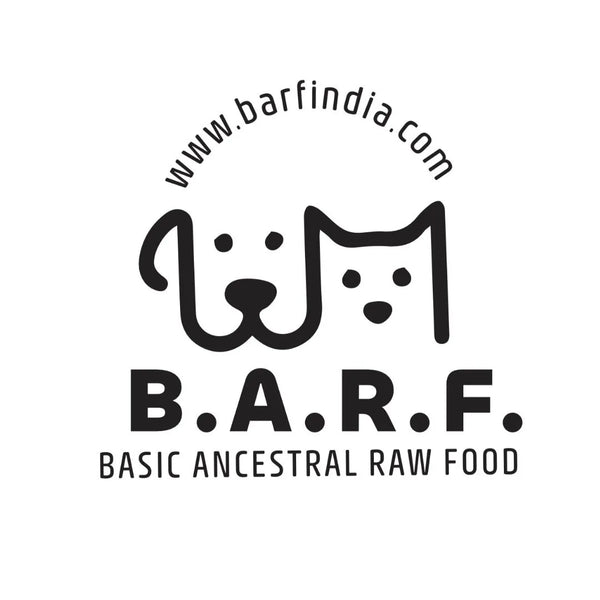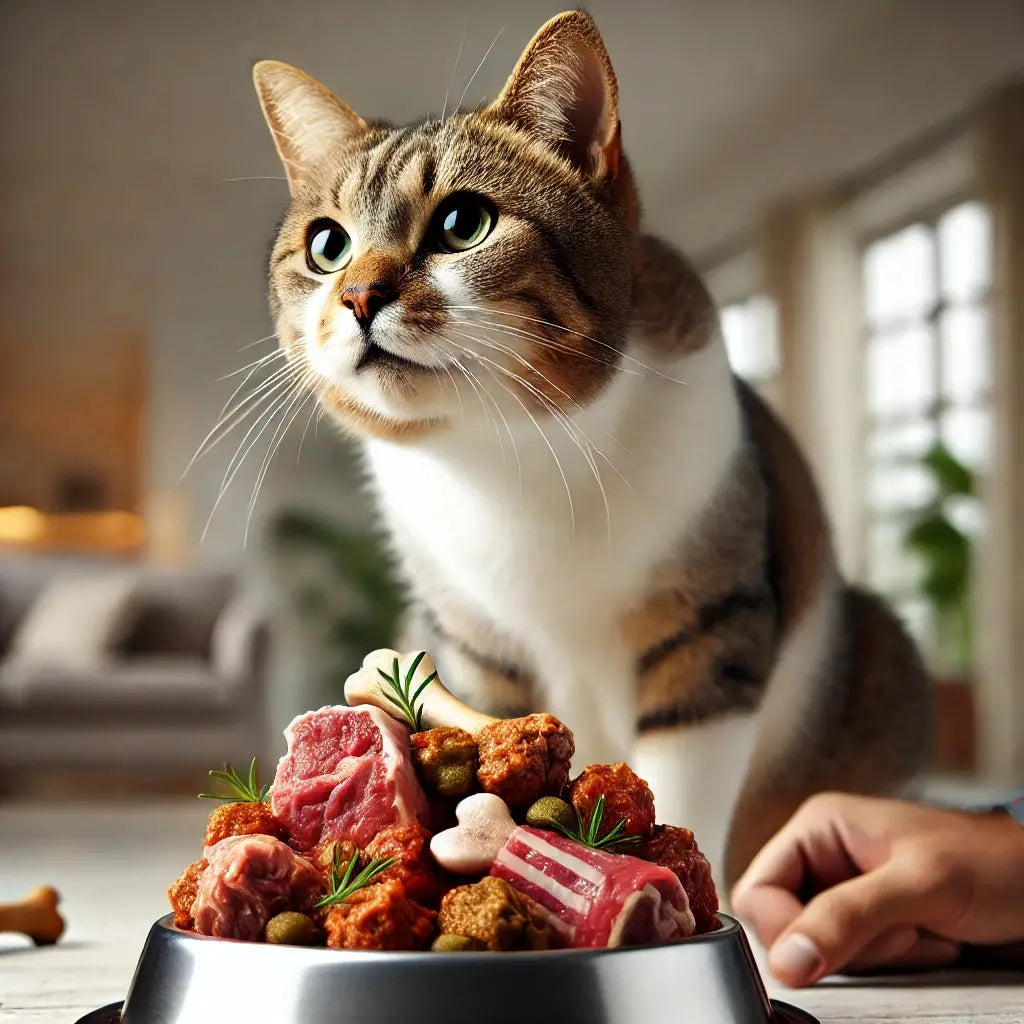Raw for Maximum Nutrition
Made in our own Kitchens
Human grade products
How Long Can Cats Go Without Food: What Every Cat Owner Must Know
WRITTEN BY NIVEDITA FERNANDES
11/8/2025
8 MIN READ
TABLE OF CONTENTS
- Why This Question Matters
- The Science Behind Feline Nutrition
- How Long Can Cats Go Without Food?
- Factors That Influence Survival Time
- What Happens to a Cat’s Body Without Food
- Warning Signs You Should Never Ignore
- Special Cases: Kittens, Seniors & Sick Cats
- How to Encourage Your Cat to Eat Again
- Preventive Measures for Healthy Eating Habits
- Why Cooked Cat Food Helps (and BARF India’s Role)
- BARF India’s Cooked Cat Food
- Conclusion & Takeaways
If you’ve been searching for a healthier, fresher alternative to processed kibble, BARF India’s cooked cat food is the answer. Made from human-grade, preservative-free ingredients, it’s the closest you can get to homemade cat food — without the effort. Our sampler pack is perfect for finicky cats, giving them a chance to explore every recipe and find their favourite.
How Long Can Cats Go Without Food: A Complete Guide for Cat Parents
When your cat refuses food, even for a short time, it can be worrying. Cats are obligate carnivores with unique nutritional needs, and their bodies are not designed to go long without nourishment. Many cat parents wonder: How long can cats go without food before it becomes dangerous?
In this detailed guide, we’ll break down exactly what happens when cats stop eating, how long they can survive without food, warning signs to look out for, and how you can encourage your feline friend to eat again. Towards the end, we’ll also explore why BARF India’s cooked cat food can be an excellent choice for picky or sensitive cats.
Why This Question Matters
Cats are creatures of routine. A skipped meal here or there might seem harmless, but unlike dogs or humans, cats lack the metabolic flexibility to handle prolonged fasting. Their bodies depend heavily on consistent protein intake to fuel energy, maintain muscle mass, and prevent fat overload in the liver.When a cat goes without food, even for 24 hours, risks begin to rise.
Understanding those risks can mean the difference between quick intervention and a health emergency.

The Science Behind Feline Nutrition
Cats are obligate carnivores. This means:
- They need high levels of animal protein daily.
- They rely on amino acids like taurine and arginine, which must come from meat.
- They have a limited ability to use carbohydrates for energy.
- They need regular fat intake for essential fatty acids and energy.
Without food, their metabolism switches rapidly to breaking down fat and protein reserves. Unlike humans, this shift can overwhelm the liver quickly, leading to dangerous conditions such as hepatic lipidosis (fatty liver disease).
How Long Can Cats Go Without Food?
- Safe window: Cats should not go more than 24 hours without eating.
- Moderate risk: Beyond 48 hours, risks of liver stress, weakness, and dehydration increase significantly.
- High danger: At 72 hours or longer, organ damage can begin, and recovery becomes more difficult.
- Extreme cases: Some cats may physically survive up to a week without food, but with severe health consequences.
The takeaway: never assume “survival time” equals “safe time.”Cats require consistent daily nourishment.
Factors That Influence Survival Time
- Supports healthy weight – High in protein, low in empty carbs.
- Age – Kittens and elderly cats deteriorate much faster.
- Health condition – Cats with kidney disease, diabetes, or infections are at greater risk.
- Promotes healthy digestion – Real meat and gentle cooking help avoid tummy troubles.
- Hydration – Water intake is crucial; dehydration shortens survival dramatically.
- Stress levels – Moving homes, travel, or household changes can make cats refuse food.
- Diet type – Cats on processed dry kibble may already have marginal hydration, making fasting riskier.
LEARN MORE ABOUT INDIA'S No.1 FRESH CAT FOOD
FRESH CAT FOODWhat Happens to a Cat’s Body Without Food
- 0–24 hours – Uses stored glucose; appetite loss is manageable.
- 24–48 hours – Body starts breaking down fat; hydration issues may start.
- 48–72 hours – Fat overwhelms the liver; muscle breakdown begins.
- Beyond 72 hours – Risk of liver failure, immune weakness, and organ stress rises sharply.
Warning Signs You Should Never Ignore
If your cat hasn’t eaten in 24 hours, look for these red flags:
- Lethargy and weakness
- Vomiting or diarrhea
- Yellowing of eyes or gums (sign of liver stress)
- Sunken eyes, dry gums, or skin tenting (signs of dehydration)
- Hiding, irritability, or unusual behaviour
At the first sign of refusal plus any of these symptoms, a veterinary checkup is urgent.
Special Cases: Kittens, Seniors & Sick Cats
Kittens
- Can’t tolerate fasting beyond 12 hours.
- Rapid metabolism makes them prone to hypoglycemia (dangerously low blood sugar).
Senior Cats
- Weakened organs and low reserves make fasting highly dangerous.
Cats with Medical Conditions
- Cats with diabetes, thyroid disorders, or kidney disease can’t afford skipped meals.
- Overweight cats risk fatty liver syndrome within days.
How to Encourage Your Cat to Eat Again
Practical steps you can try at home:
- Offer food slightly warmed to release aroma.
- Try a different protein source (chicken, fish).
- Switch texture—pâté vs. chunks vs. shredded.
- Feed in a quiet, stress-free area.
- Use food toppers like broth or freeze-dried treats.
- Offer smaller, frequent meals rather than one large portion.
- Hand feed to spark interest.
If refusal persists beyond 24 hours, seek veterinary guidance immediately.

Preventive Measures for Healthy Eating Habits
- Stick to consistent feeding times.
- Transition diets gradually to avoid rejection.
- Provide fresh, high-quality, meat-based food.
- Keep water bowls fresh and available at multiple spots.
- Schedule regular vet visits to rule out hidden illnesses.
- Minimize stressors in the home environment.
These habits not only prevent fasting episodes but also promote long-term health.
Why Cooked Cat Food Helps (and BARF India’s Role)
One of the best preventive strategies is offering food your cat naturally enjoys. Cooked cat food is:
- Highly palatable – Aroma and texture attract picky eaters.
- Moisture-rich – Supports hydration, unlike dry kibble.
- Easily digestible – Cooked proteins are gentler on the stomach.
- Nutritious – Balanced recipes support daily needs without fillers.
BARF India’s Cooked Cat Food
At BARF India, we prepare freshly cooked meals that combine safety, taste, and nutritional balance.
- Made from real meat like chicken and fish.
- Prepared in small batches, not mass-produced.
- Free from harmful fillers and preservatives.
- Designed to meet feline nutritional requirements.
This makes BARF India’s cooked cat food a reliable solution for:
- Cats recovering from illness or stress
- Picky eaters refusing kibble
- Everyday feeding for long-term health
Conclusion & Takeaways
- Cats should never go more than 24 hours without food.
- Risks escalate after 48–72 hours, potentially leading to liver damage and organ stress.
- Kittens, seniors, and sick cats are far less tolerant and need immediate care.
- Encouraging appetite with palatable, moisture-rich food is key.
- BARF India’s cooked cat food offers a natural, tasty, and balanced option to keep cats eating consistently and healthily.
👉 Explore BARF India’s Cooked Cat Food Range and give your cat the nutrition they deserve.

